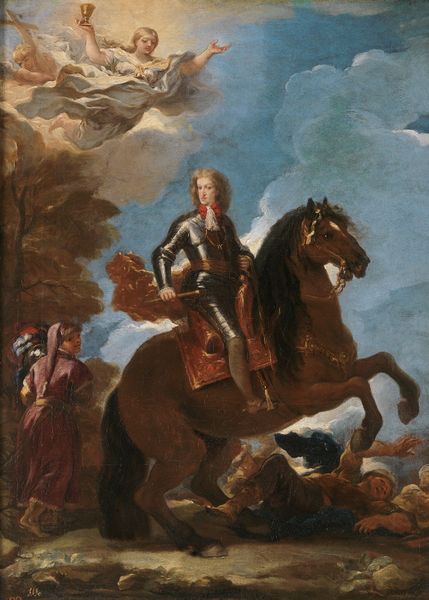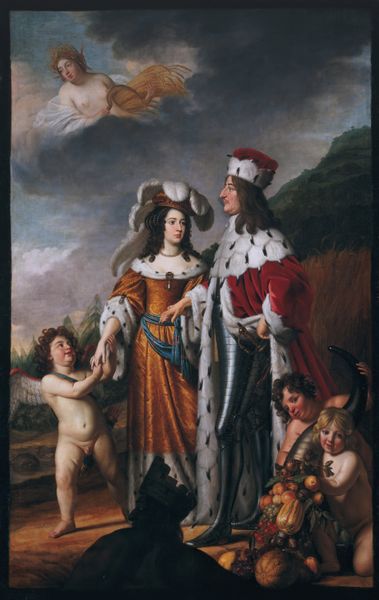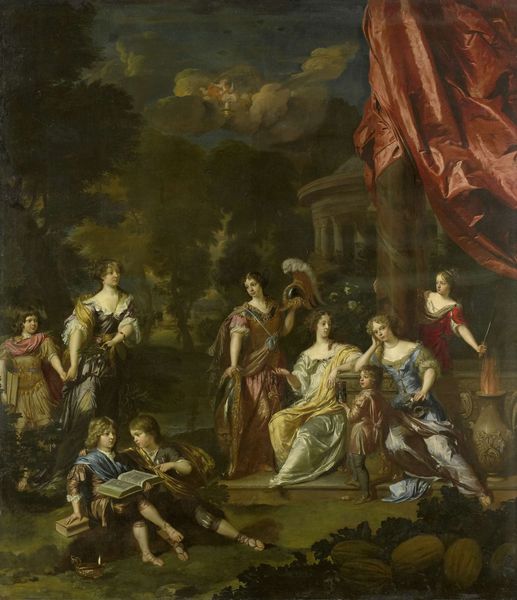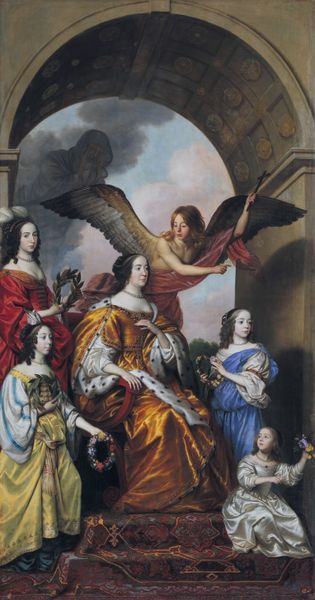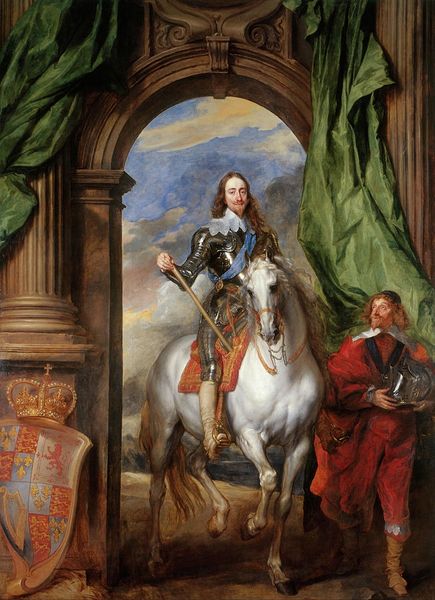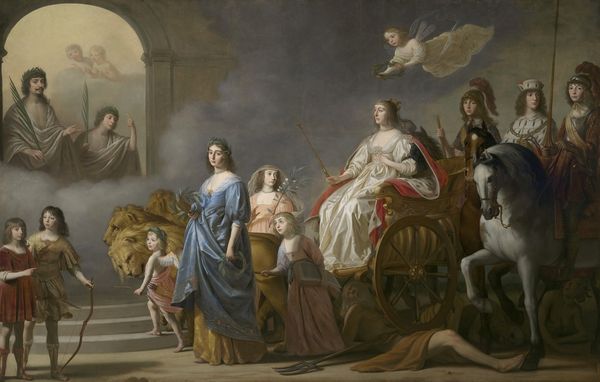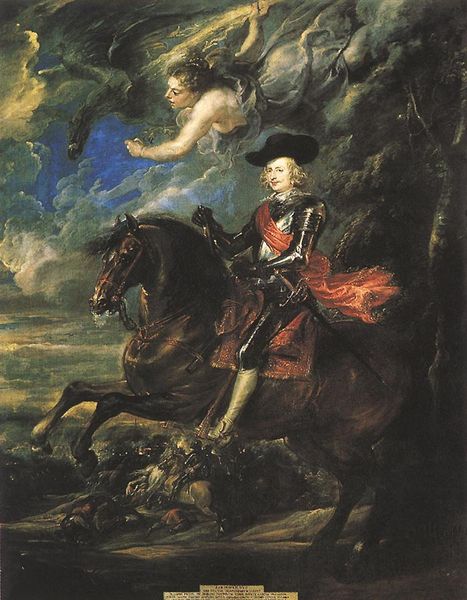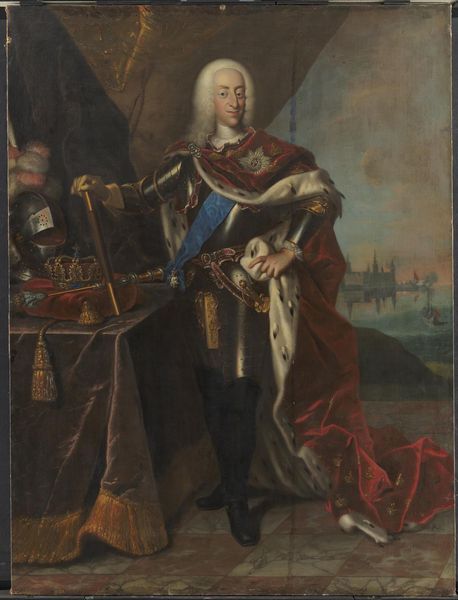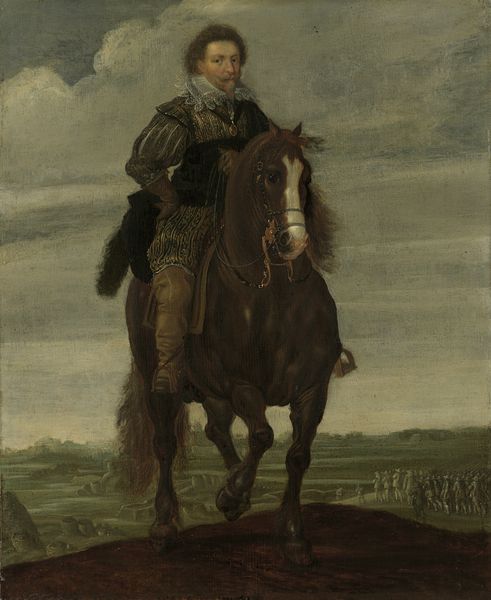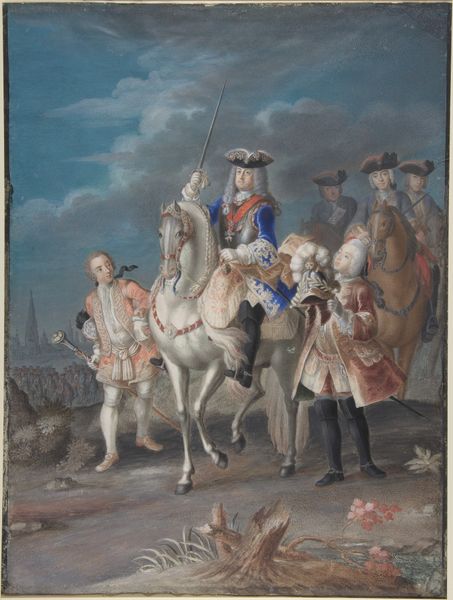
Portrait of Maximilian II, Elector of Bavaria, at the Battle of Mohács against the Turks 1710 - 1750
0:00
0:00
josephvivien
Rijksmuseum
oil-paint
#
portrait
#
allegory
#
baroque
#
oil-paint
#
oil painting
#
history-painting
Dimensions: height 74.5 cm, width 55 cm, depth 5 cm
Copyright: Rijks Museum: Open Domain
Curator: My eye is immediately drawn to the figures above Maximilian; they lend a dreamlike quality to the whole scene. Editor: Indeed. Let's delve into this work a bit. This is Joseph Vivien's oil painting, "Portrait of Maximilian II, Elector of Bavaria, at the Battle of Mohács against the Turks," created sometime between 1710 and 1750, and currently residing here at the Rijksmuseum. It’s a fascinating piece of historical portraiture with strong allegorical elements. Curator: Allegorical is the right word. The two winged figures overhead, one offering a laurel wreath, transform what might have been straightforward propaganda into something more transcendent. What could that symbol tell us about the political climate of the time? Editor: Precisely. It certainly presents Maximilian II as a victor blessed by divine favor, reinforcing his authority through a visually compelling narrative. The placement of the battle in the distant background serves to highlight Maximilian’s personal bravery and leadership. What kind of statement did it intend to communicate? Curator: It's powerful stuff. Armor becomes a symbolic representation of invincibility and the righteous cause of a ruler, while the vanquished Turks beneath, although pushed into the shadow, contribute to a feeling of subdued triumph, an attempt to illustrate that overcoming challenges comes from wisdom and from Heaven's grace. But let's consider also that almost 200 years have passed between the historical event and the date the artwork was created. Editor: A critical point! The glorification through Baroque art often came well after events. The past serves as material for current aspirations, solidifying the Elector's power within the visual culture of the 18th century, in an almost artificial way. This kind of imagery plays a critical role in shaping a ruler’s image. What, then, does that say about how rulers construct power through representation? Curator: Exactly. Visual memory is a curious and shifting ground; that wreath represents something very different to us than it did when Vivien brushed those oils. Editor: Yes. This painting really underscores how art and history are interwoven, shaping each other over time. Curator: Indeed, a painting of both a man and a concept—memory.
Comments
No comments
Be the first to comment and join the conversation on the ultimate creative platform.
